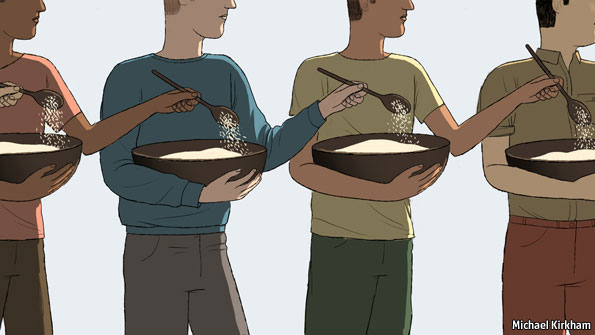Here are the latest stories that have created a buzz or otherwise caught our attention over the last week.
The Economist and nontraditional donors
This article in The Economist has raised the profile of nontraditional donors. Using the proposed establishment of a new Indian Agency for Partnership in Development (similar to AusAID or DFID) as its premise, the article notes that aid from the BRICs more than doubled between 2005 and 2008, and that the “establishment donors’ monopoly is finished”.
Crisis in the Horn of Africa
Britain’s international development secretary Andrew Mitchell has warned that up to 400,000 children could die through starvation if urgent action is not taken in Somalia. Reporting for The Guardian, Suzanne Goldenberg warns that a volatile global food supply is deepening the humanitarian catastrophe in the Horn of Africa, as shown in a new World Bank report. To make a donation, head here or here.
The global food crisis?
In this article, Masimba Tafirenyika discusses how delaying reforms of the global food system will ensure recurrent surges in global food prices. A recent Oxfam report, Growing a Better Future, forecasts price increases in the range of 120–180 per cent “as resource pressures mount and climate change takes hold.” Go here to see the World Bank’s Food Price Watch for more detailed information on global health prices and trends. On the CGD blog, Kimberly Ann Elliott, presents some questions to the G20 as to why they are not doing more to take the hard steps of reform that could reduce the probability of the next emergency happening.
Originally found here, Oxfam’s new interactive map shows how poor communities across the world are being hurt by high and volatile food prices. This ‘food price pressure points map’ provides a global snapshot of the impacts of the global food price crisis. This ‘food price pressure points map’ provides a global snapshot of the impacts of the global food price crisis.
Economics and Emigration: Trillion-dollar Bills on the Sidewalk?
In the latest discussion paper for the CGD, Michael Clemens discusses how the barriers preventing people from emigrating from low-income countries, according to economists’ best estimates to date, cost the world economy much more than all remaining barriers to the international movement of goods and capital combined. Clemens investigates why economists spend so much more time studying the movements of goods and capital and argues that barriers to emigration deserve a research priority that is commensurate with their likely colossal economic effects.
World Humanitarian Day 2011
On August 19 it was World Humanitarian Day, a day to celebrate people helping people in dangerous places all over the world. According to AusAID, since 1997 in East Africa alone, there have been more than 700 aid workers who have been killed, kidnapped or seriously injured in their line of work. As part of World Humanitarian Day, the UN is putting together amazing stories of humanitarian and aid workers doing their part to help others across the globe. See one story below.
We value your feedback
We want to know what you’re reading. This blog post contains a cross-section of topics – let us know what you think. What’s creating a buzz for you?



Leave a Comment